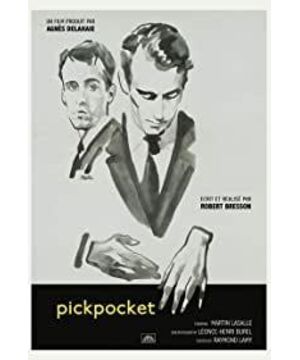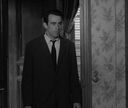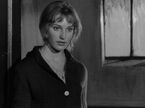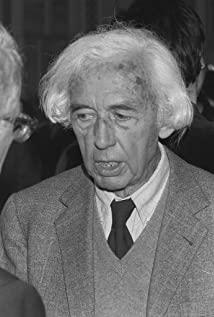As a "formalist", Robert Bresson's films always have a French elegance. Through close-ups, the local movements of the limbs are presented and a sense of solemnity is obtained. "Pickpocket" is almost an ideal "Bresson" theme. In this movie about hands, the form and content fit perfectly. The process of stealing was arranged into an elegant waltz. Except for the "spectacle" of theft at the station, even just one action deserves to be called a "dance". The meaning of using "dance" as an analogy is by no means to stay on the surface, it also presents a more in-depth discussion. Just as the waltz contains the exchange and unity of the power of two dancers, Bresson’s "Pickpocket" also always tells what the gravity between people is all about? From a physical point of view, the gravitational force between people is real and at the same time negligible. And when the movie uses the frame to reorganize the world, the effect of gravity is also infinitely magnified, even becoming a crucial issue. Bella Tal’s early films failed because of putting too much gravity between the characters. In films that focus on social issues, such as "A stranger" and "Life in Building Blocks", Bella Tal's characters get too close in shots that are clearly influenced by Wiseman's style. Gravity then exploded torn apart the meaning of the picture. In contrast, there has been a clear evolution in his later films. In "Whale Circus", which is praised by many people, at the beginning of the film, in a tavern with local Hungarian characteristics, the male protagonist rehearses the movement of celestial bodies. The drunk and almost unconscious people in the tavern each acted as a planet and kept moving in accordance with the logic of the forces in the universe. Through the rehearsal, a certain reality is revealed to the contrary. This is the simple truth that Zizek keeps repeating. The gravitational force of the picture is then revealed in the picture, realizing the dream of filming invisible things for a long time in the film. More generally, Hollywood uses a set of classic lens grammar to put the problem of gravity in an unobtrusive position. These films have a pragmatic color, just as Bordwell defined four different relationships under the concept of so-called "distance relationship", namely, intimate, personal, social and public. This obviously anthropological approach is intended to allow the film to better imitate the real human society. "Pickpocket" considers the issue of "power" from a more essential level. The first is between people, it is composed of a series of cohesion-relaxation or the opposite process. In the paragraph of the first theft, in the stands of the racecourse, Mitchell keeps approaching the target victim, which is a cohesion the process of. At the same time that the scenery is getting smaller, the power is also gathering. This process reached its peak when the woman turned her head, and then the camera cut away, and the force was vented. On the surface, this seems to be the same strategy as the traditional melodrama that accumulates suspense, reveals the answer, and adjusts the rhythm. But Bresson obviously went further. Susan Sontag’s famous film review helped us recognize Bresson’s rejection of suspense. At the same time, Sontag compares Mitchell's fascination with theft to some kind of masturbation experience. In the process of self-blasphemy, the process of cohesive force-release force is more obvious. It is not only a description of a muscle movement, but also a mental process. The decisive factors include the distance of the individual and the overall environment. For the film, the presence of the frame must also be taken into consideration. Whether it is the alienation of modern people implied by Antonioni through visual distance, or the tradition of facial close-ups pioneered by Dreyer that has a profound impact on future filmmakers, the existence of the film frame is an eloquent premise. In addition to the role of restriction and interception, the frame itself also contains the role of force. The success of the theft requires a proper distance between the thief and the target. If you are too far away, you can't steal. If you are too close, you will be discovered, and the whole operation will fall through. This principle also applies to dance. Of course, the distance required for theft is always offensive for daily interpersonal relationships, or what Podwell calls "social distance". Every successful theft first aroused the alert eyes of the target, whether in the racecourse or in the subway. However, just like Mitchell's "Superman" theory, most people will shrink at this step, but Superman, with his own conscience, ignores social rules and laws, but is a factor that is conducive to the development of the entire society. The presence of gravity is reflected in almost all shots. Regardless of those colorful passages that have long been talked about by many critics, we can even see the rule of "force" in those functional, unobtrusive passages. There is a scene in which Mitchell was captured after stealing at the racecourse, but was released because of insufficient evidence. In that shot, Mitchell was first sitting in a chair, looking up at the police officer who stood up outside the painting. Then, he also stood up, his eyes were opposite to the movement of his body, and he fell on the pile of stolen money. This little lens, which assumes a certain transitional role, clearly tells us that there is a certain kind of traction that is always present. Mitchell's freedom is false, because he is drawn by the stolen money and desires, he will eventually lose his freedom again and go to jail. Bazin once defined the frame of the painting as a closed and inwardly spaced space, while the film frame implies the influence of the external world. exist. From Lumiere's short film "Baby's Lunch", this feature is regarded as the original and essential existence of the film. In this way, characters and events appear in the frame, but it is an accidental and beautiful misunderstanding. Between this requirement brought about by drama and visibility, and the ideal of film as the "restoration of material reality" constantly told by Bazin and Krakauer, film has become an extremely unbalanced fate. exist. Juxtaposed with the emptiness in the infinite external world are those very wonderful pictures in the narrow frame of view because of the extreme crowding.
View more about Pickpocket reviews








